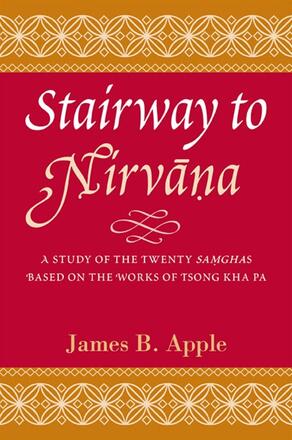
Stairway to Nirvāna
A Study of the Twenty Saṃghas Based on the Works of Tsong kha pa
Discusses an essential Tibetan Buddhist work that shows how Noble Beings progress toward enlightenment.
Description
James B. Apple examines one of the formative subjects in traditional Buddhist studies, the Twenty Varieties of the Saṃgha. The Saṃgha (community) is one of the Three Jewels (Buddha, Dharma, Saṃgha) universally revered by all Buddhists. While the Saṃgha is generally understood as the community of Buddhist ordained monks and nuns, along with lay adherents, the Twenty Varieties of the Saṃgha concerns an exemplary community of the twenty types of Noble Beings (ārya-pudgala) who embody the Buddha's teachings. Focusing on the interpretation of the Saṃgha given by the fourteenth-century Tibetan scholar Tsong kha pa, Apple provides a comprehensive typology and analysis of the stages through which Noble Beings pass in their progress toward enlightenment through multiple lifetimes in various cosmological realms. He explains the cosmographic formations and complex structures of Buddhist spiritual cultivation, illustrating how Tibetan and Indian Buddhists conceptualize all possible states on the path to enlightenment.
James B. Apple is University Lecturer in the Interdisciplinary Religious Studies Program at the University of Alberta.
Reviews
"Dealing with an interesting and understudied topic, Apple displays a thorough mastery of the Saṃgha in the Abhisamayālamkāra and its surrounding literature. " — Roger R. Jackson, translator of Tantric Treasures: Three Collections of Mystical Verse from Buddhist India